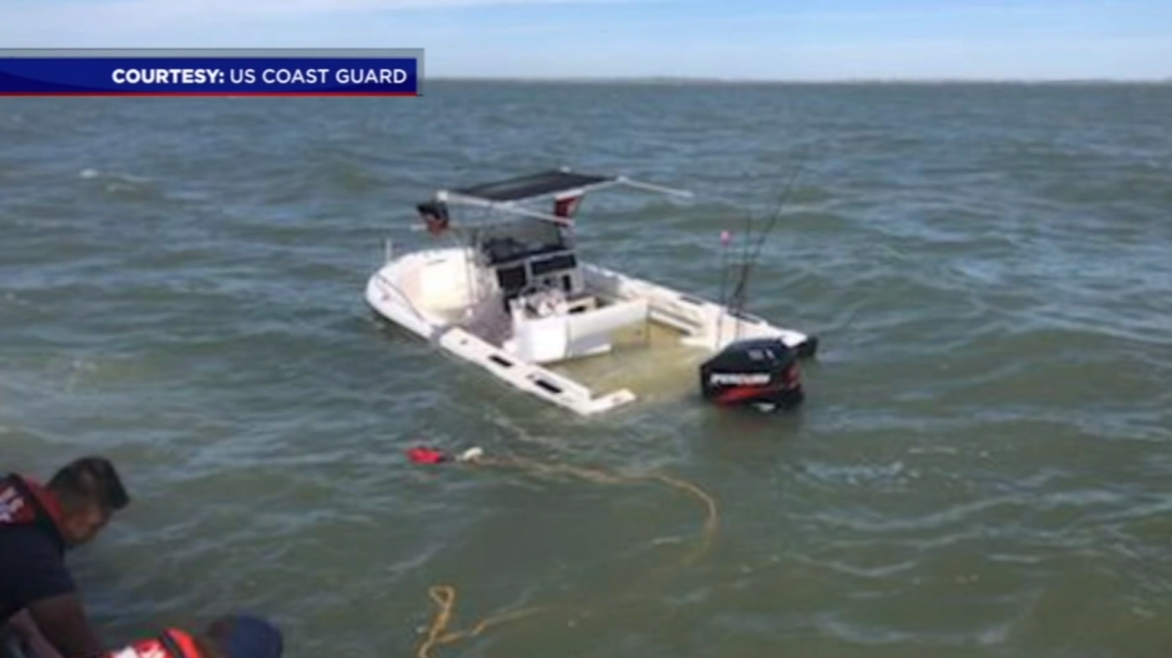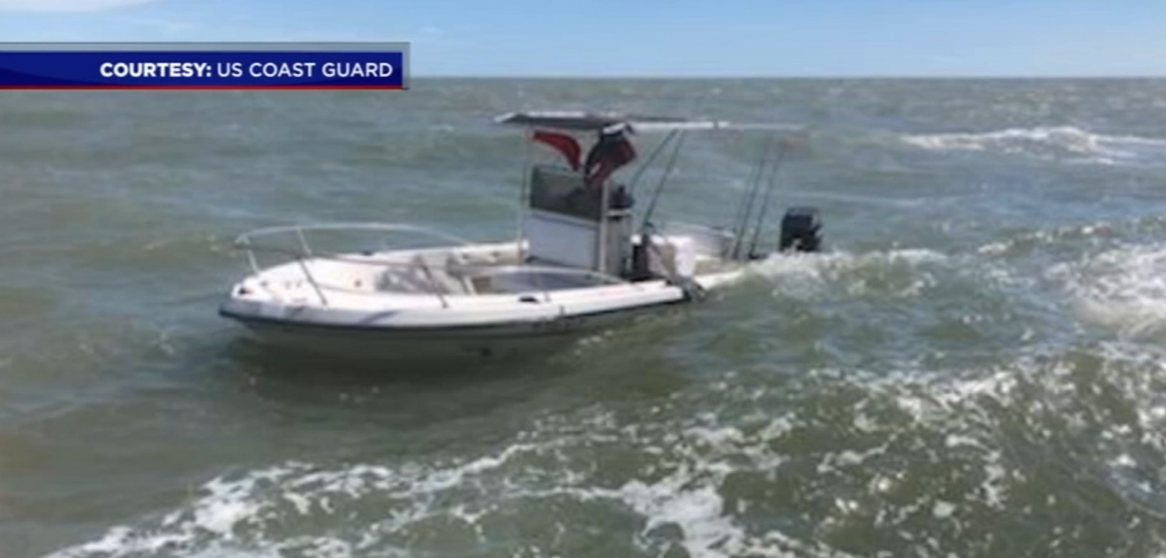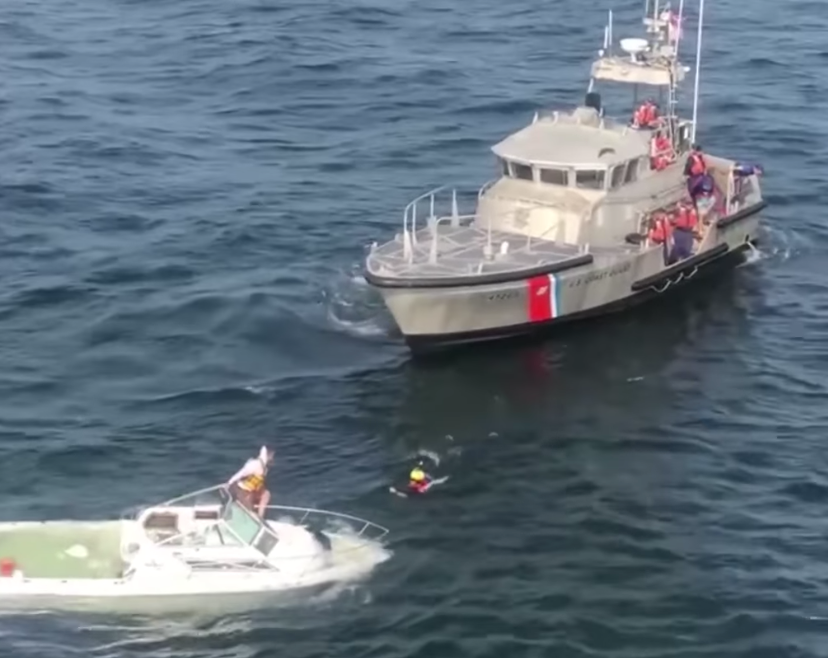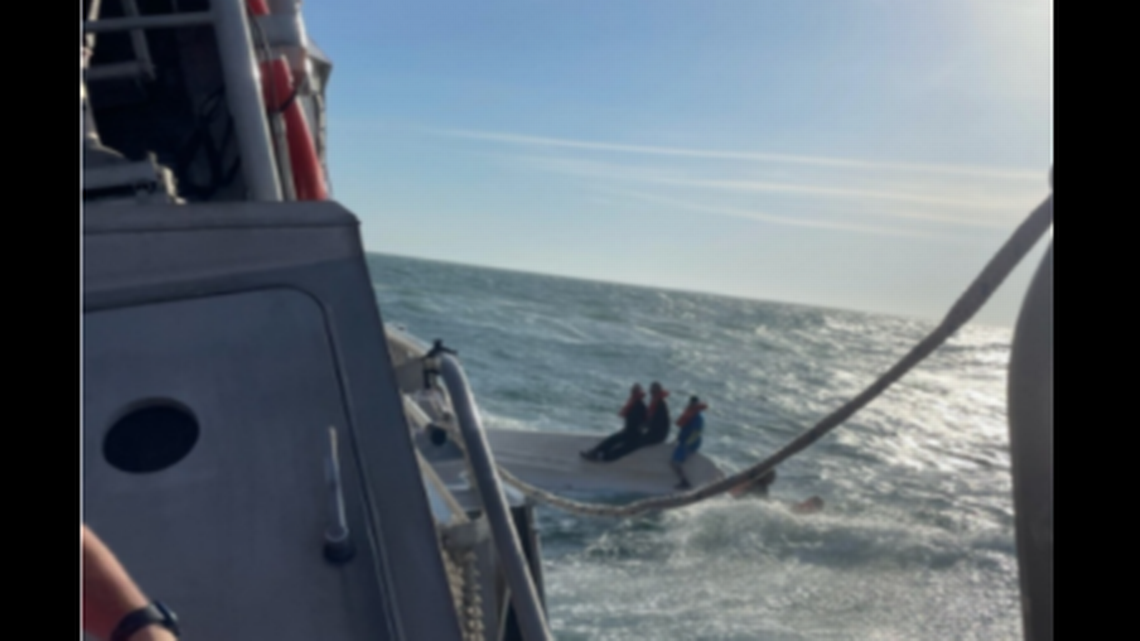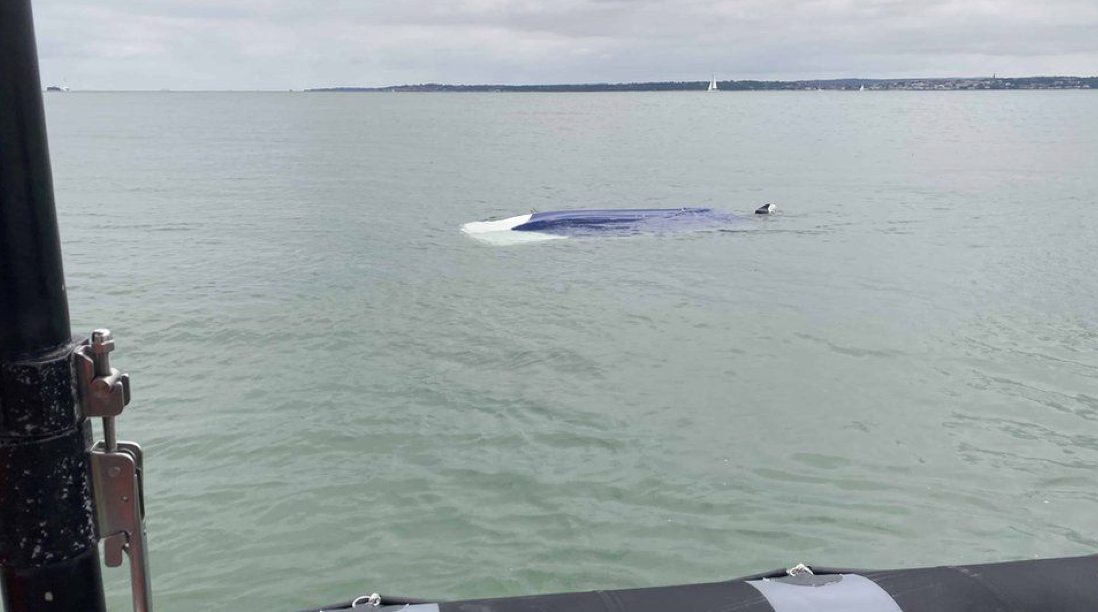“Floating Level When Swamped” Is Good Boat Building and Saves Lives
Regular researchers of BoatTEST often read the phrase “will float level if swamped.” Over the years, BoatTEST Members have asked what that means, and thanks to the USCG, we now have a couple of pictures to show of a boat floating level when swamped. USCG regs require that all boats with a 2-hp engine or greater and 20’ (6.1 m) and under to “float level if swamped.” The vessel above performed admirably – as it should have. The five occupants of this boat were rescued standing up in the boat. Find out more about this rescue and as well as a few of our thoughts on boat flotation.
All’s Well That Ends Well
On October 17, 2021, the United States Coast Guard rescued five people from their sinking boat a mile off the coast of Freeport, TX. Officials say the call for help came in around noon from the 20’ (6.1 m) long boat, which was sinking near the mouth of the Brazos River. When crews arrived on the scene, they found all five people standing aboard the sinking boat wearing their life jackets.
"These boaters' decision to proactively [put on] life jackets assuredly contributed to the successful outcome of this case," said Coast Guard Captain Keith Donohue in a news release. The Coast Guard was able to safely pull all five people out of the water and tow the sinking boat to a marina in Freeport.
"Emergencies can strike without warning on the water, and it's imperative that all boaters wear their life jackets at all times and pay attention to the weather conditions while operating offshore," Donohue said.
Required By Law
In 1978, the United States Coast Guard enacted a law requiring all boats less than 20’ (6.59 m) long powered by at least 2 hp to float level when swamped. The idea behind it was to have passengers stay with the boat if in fact it does swamp because it’s easier for search and rescue personnel to spot a whole boat than bobbing heads in the ocean.
It’s a good requirement and one that we hope all manufacturers build their boats to meet. That being said, we’ve heard of many incidents where a person had to swim away from a 20’ (6.59 m) boat after it in fact didn’t float level and sunk. We’ve also seen photos of boats in this category with only their bows sticking out above the surface, or not floating level. The Coast Guard and National Marine Manufacturers Association (NMMA) rely on a manufacturer to meet these regulations, but each unit sold is not tested for flotation. This means consumers need to do their own research into the integrity of a boat they plan to buy.
Real-World Scenarios
On September 12, three people were rescued after their boat was swamped by water east of Long Branch, NJ. USCG Air Station Atlantic City said its crew was in a routine training mission when it was diverted to the stricken vessel. A boat from Coast Guard Station Manasquan Inlet/Shark River also responded to the scene.
Earlier this year in April, the Coast Guard found three people riding atop a capsized boat and two more in the water off the Outer Banks of North Carolina. Their 26’ (&.92 m) boat sank and flipped over in the early evening of April 27 about 6 miles (9.66 km) beyond Oregon Inlet. The rescue boat arrived about 40 minutes after the initial distress call of a boat taking on water was received.
All five people were taken to Outer Banks Hospital where they were treated for hypothermia. One of the people on board, Brad Smith of Virginia Beach, VA credits the Coast Guard with saving his life. The group had been fishing for about 12 hours when the boat began taking on water. In a Facebook post, Smith wrote, “The time between realization that weren’t putting the water out faster than we were taking it on and capsizing was less than 5 minutes.” He added. “We’re all alive. We will all make a 100% recovery. We have the #USCG to thank for being alive right now.”
From the other side of the Atlantic, in late August, four men were pulled from the water off Southsea in the United Kingdom when their 15’ (4.6 m) boat was swamped by a large wave. A fishing boat pulled two of the men from the water before the Gosport and Fareham Inshore Rescue Service (GAFIRS) arrived to rescue the other two. The men, all in their 30s, were treated for hypothermia and inhalation of sea water by ambulance crews.
According to the BBC, GAFIRS coxswain James Baggott said the rescue was possible because one of the men was carrying a handheld VHF radio that was used to make a mayday call from the water.
"The four men were very lucky that the passing fishing vessel was able to assist and the quick response of that vessel's skipper must be applauded,” said Baggott. "We were on scene within minutes of the mayday call as we were training in Portsmouth Harbor and soon able to help recover the other men from the water."
In the video at the top of this page, an angler recalls a fishing trip from the early 1980s when he and the group of fishermen on his boat were among the early beneficiaries of the law. They headed about 32 miles (51.5 km) out into the ocean in a 19’ (5.79 m) Mako powered by an 85-hp Johnson outboard. As so often happens, the flat calm conditions experienced in the morning devolved into a front that hit earlier than expected. We’ll let the captain of the boat take it from here.
